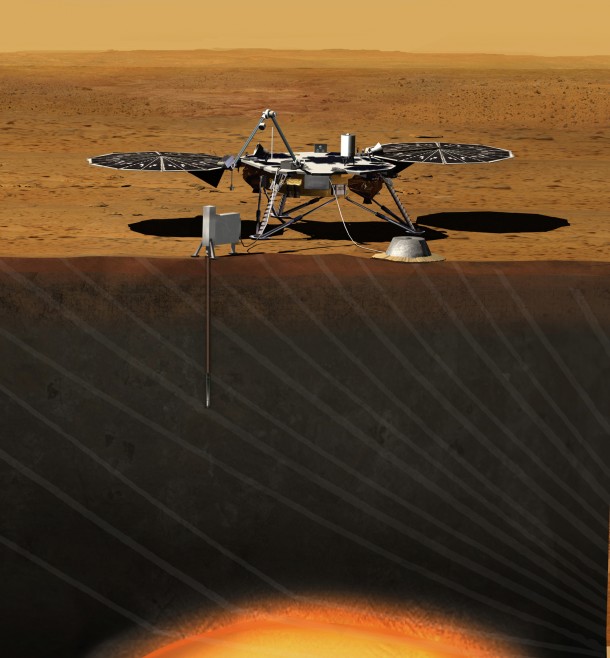NASA just can’t get enough of Mars. Two weeks after successfully landing the much-ballyhooed rover Curiosity on the red planet, officials at the U.S. space agency announced that yet another mission to Mars is set for 2016.
The InSight mission, which stands for “Interior Exploration using Seismic Investigations, Geodesy and Heat Transport,” will investigate deep below the Martian surface to see why the planet developed differently than Earth.
InSight, according to NASA, will be more than a mission to Mars. Officials hope this terrestrial planet explorer will answer some long-held questions about planetary and solar system science, including the processes that went into forming the rocky planets of the inner solar system -Mercury, Venus, Earth, and Mars- more than four billion years ago.
Unlike the Mars explorers currently cruising the planet’s surface, the InSight lander is designed to stay put while several sophisticated instruments do the heavy lifting.
While a robotic arm and two cameras help set and monitor all of the gear placed on the planet’s surface, an onboard geodetic instrument will determine the rotational axis of Mars.
Other devices include one that measures the seismic waves traveling though the interior of Mars, as well as a subsurface heat probe designed to gauge the heat flow from the planet’s interior.
The InSight mission is getting assistance from international partners including the French space agency, CNES, which is contributing the seismic monitoring equipment. The German Aerospace Center is slated to provide the subsurface heat probe.
Mission team members for InSight, the new Mars lander mission selected by NASA to launch in 2016, explain how the spacecraft will advance our knowledge of Mars’ history and rocky planet evolution.
The InSight mission was selected from three finalist proposals which were chosen from many in May 2011. The two rejected missions included putting a spacecraft on the surface of a comet, while the other proposed a mission to Saturn’s moon Titan.
“The exploration of Mars is a top priority for NASA, and the selection of InSight ensures we will continue to unlock the mysteries of the Red Planet and lay the groundwork for a future human mission there,” NASA Administrator Charles Bolden said. “The recent successful landing of the Curiosity rover has galvanized public interest in space exploration and today’s announcement makes clear there are more exciting Mars missions to come.”
Scheduled for launch in March 2016, InSight is expected to land on Mars in September 2016 for a 720-day mission.






















I wish that NASA had chosen the Titan mission or the comet lander instead.
why is the mars refers to as red planet?
Hello!
Mars is called “The Red Planet” because of it’s red/orange color – here’s a better explanation – http://www.esa.int/esaKIDSen/SEM3L6WJD1E_OurUniverse_0.html
It is better NASA should decide strongly on Insight rather than Titan or any Comet at this point of time since man plans to be in Mars by 2030